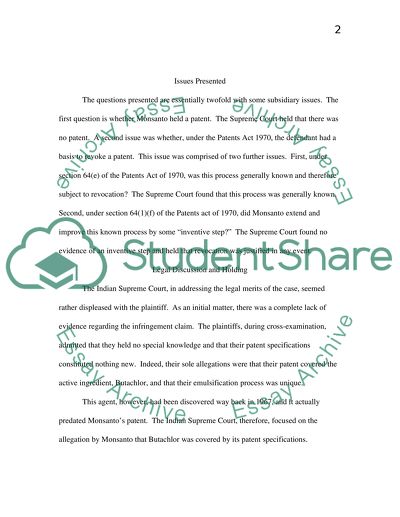Monsanto Company by Their Patent Agent, De Penning and Depen v Case Study. Retrieved from https://studentshare.org/law/1515625-international-law-master-essay
Monsanto Company by Their Patent Agent, De Penning and Depen V Case Study. https://studentshare.org/law/1515625-international-law-master-essay.


